In the realm of product development, the Product Requirements Document (PRD) serves as a crucial blueprint that outlines the features, functionalities, and specifications of a product. This document acts as a guiding beacon for the entire development team, aligning their efforts and ensuring a unified vision. In this article, we will delve into the key components and best practices for creating an effective Product Requirements Document.
Part 1. What is Product Requirements Document?
A Product Requirements Document (PRD) is a detailed document that outlines the specifications, features, functionality, and expectations for a product that is being developed. It serves as a crucial communication tool between different stakeholders involved in the product development process, including product managers, designers, engineers, and other team members.

Part 2. What is the Purpose of Product Requirements Document?
The Product Requirements Document (PRD) serves several important purposes in the product development process. Here are some key reasons why a PRD is created and its purposes:
Communication: The PRD serves as a communication tool that helps align all stakeholders, including product managers, designers, engineers, and other team members, on the goals, features, and expectations for the product. It provides a centralized source of information that everyone can refer to throughout the development process.
Reference Point: The PRD acts as a reference point for the entire development team. It provides a comprehensive overview of the product, outlining its scope, features, and functionalities. Team members can refer to the document to ensure that their work aligns with the overall vision and requirements.
Decision-Making: The PRD facilitates decision-making throughout the development process. When questions or issues arise, the document can be consulted to determine the agreed-upon specifications and requirements, helping to avoid misunderstandings and conflicts.
Blueprint for Development: It serves as a blueprint or roadmap for the development team. The detailed specifications and requirements outlined in the PRD guide the development process, helping to ensure that the final product meets the intended goals and user needs.
Project Planning: The PRD includes information about timelines, milestones, and dependencies, providing a basis for project planning and management. It helps teams set realistic goals, allocate resources effectively, and establish a timeline for the completion of different features.
In summary, the Product Requirements Document plays a crucial role in ensuring that everyone involved in the product development process is on the same page, that decisions are well-informed, and that the final product aligns with the intended goals and user expectations.
Part 3. Components of Product Requirements Document
The basic components of a Product Requirements Document (PRD) typically include the following fundamental elements:
Product Overview:
- Briefly describe the product.
- Clearly state the high-level goals and objectives.
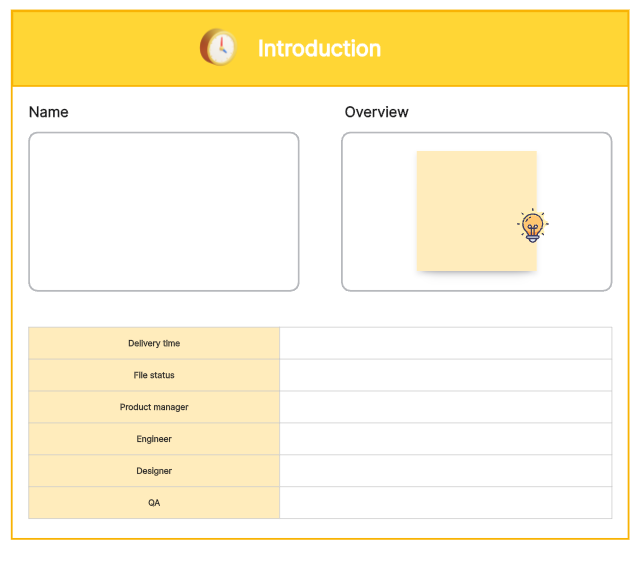
Scope:
- Define the boundaries of the project.
- Specify what is included and excluded from the product.
Functional Requirements:
- Detail the features and functionalities of the product.
- Use user stories or use cases to describe how users will interact with the product.
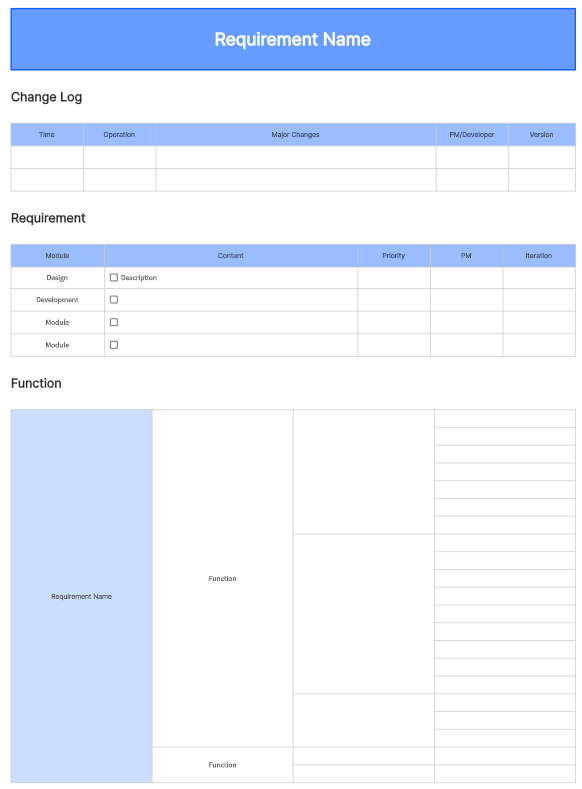
Non-functional Requirements:
- Specify constraints and limitations.
- Include performance expectations, security requirements, and other non-functional aspects.
User Interface (UI) and User Experience (UX) Design:
- Outline design principles and guidelines.
- Provide wireframes or mockups to illustrate the intended user interface.

Timeline and Milestones:
- Present a proposed project timeline.
- Identify key milestones and deadlines.
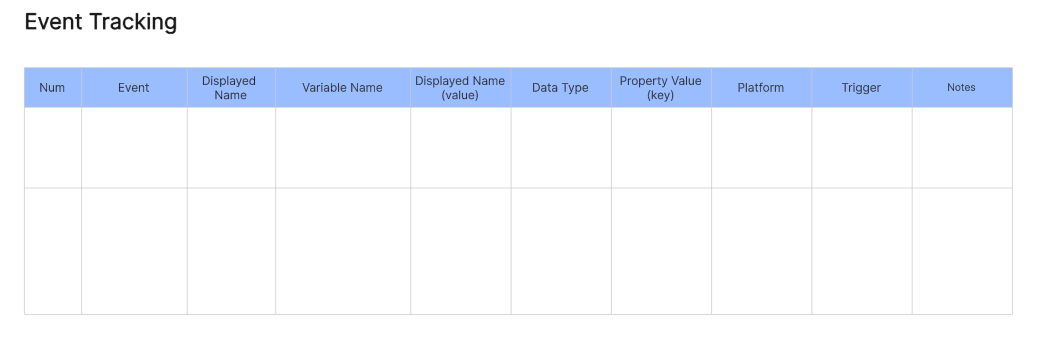
These core components help set the foundation for the project, providing a clear understanding of what the product is, what it aims to achieve, and how it will function. Additional components, such as technical architecture, dependencies, and risk management, are often included for more comprehensive and detailed PRDs. The level of detail in each section can be adjusted based on the project's complexity and specific requirements.
Part 4. How to Create a Product Requirements Document?
Creating a Product Requirements Document (PRD) involves several key steps to ensure clarity, alignment, and comprehensive coverage of the project. Here's a step-by-step guide to help you create a PRD:
Step 1. Define Purpose and Scope: Clearly state the purpose and scope of the product.
Step 2. Identify Stakeholders: List all stakeholders and understand their roles.
Step 3. Outline Goals and Objectives: Clearly articulate high-level goals and objectives.
Step 4. Specify Requirements: Identify functional and non-functional requirements.
Step 5. Design UI/UX Guidelines: Provide design principles and wireframes.
Step 6. Detail Technical Aspects: Outline technical architecture and dependencies.
Step 7. Address Risks and Constraints: Identify risks and develop mitigation strategies.
Step 8. Create Timeline and Milestones: Propose a project timeline and key milestones.
Remember to review, revise, and obtain final approval from stakeholders before distributing the PRD to the team. Regular updates may be needed as the project progresses.
Part 5. Simplify Product Requirements Document Creating with Boardmix
Boardmix is a revolutionary online whiteboard tool that simplifies the process of creating product requirement documents. With its extensive library of drawing templates, you can easily visualize and map out your product requirements in a clear and organized manner. Boardmix's intuitive interface allows for real-time collaboration, making it easier to share ideas, receive feedback, and make changes on the fly. Whether you're working with a small team or coordinating with multiple departments, Boardmix makes it easy to create comprehensive product requirement documents that everyone can understand.
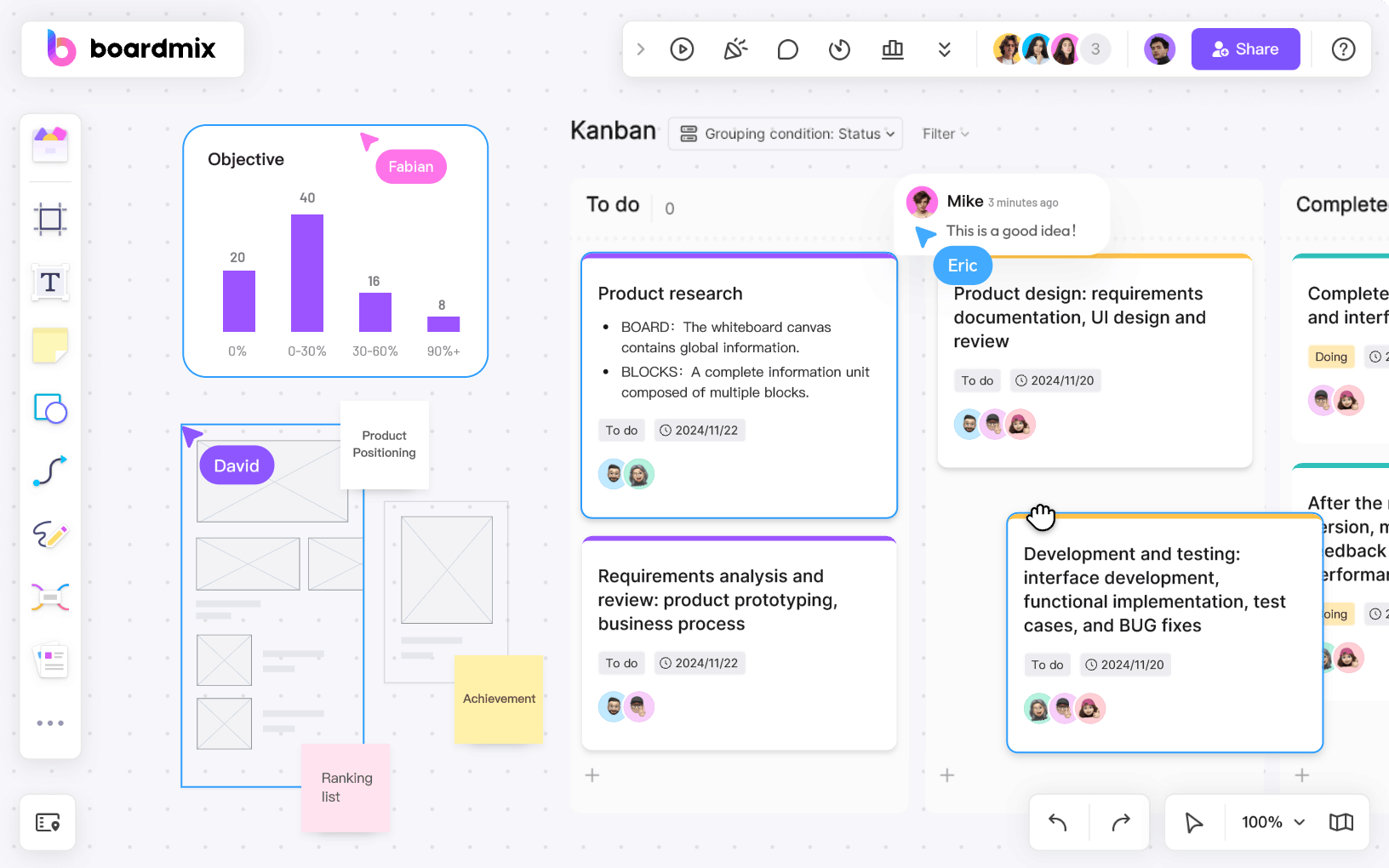
Key features of Boardmix:
- Extensive Template Library: BoardMix offers a wide range of pre-designed templates, making it easy to start any project.
- Intuitive Drawing Tools: With BoardMix's user-friendly drawing tools, you can easily sketch out ideas and concepts.
- Real-Time Collaboration: BoardMix allows multiple users to work on the same document simultaneously, fostering effective team collaboration.
- Instant Sharing: With just a click, you can share your whiteboard with stakeholders or save it for future reference.
- Cross-Platform Accessibility: Whether you're on a desktop or mobile device, BoardMix is accessible anytime, anywhere.
Steps to create PRD with Boardmix:
Step 1. Start by opening BoardMix and selecting a template from our extensive library that best suits your project's needs.
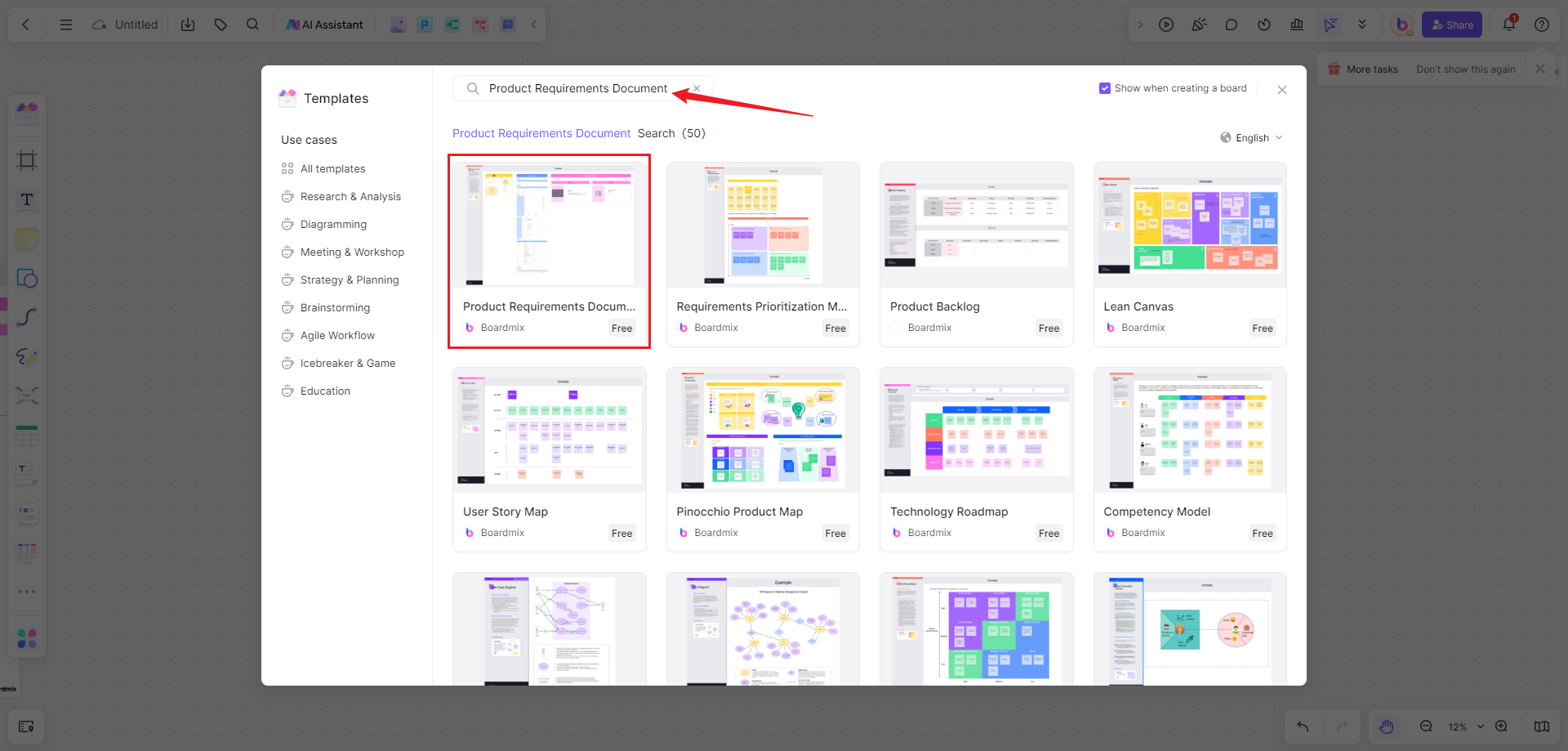
Step 2. Use the intuitive drawing tools to map out your product requirements. You can add text, shapes, lines, and more to clearly illustrate your ideas.

Step 3. Invite team members to collaborate in real-time. They can add their own ideas, provide feedback, and make changes instantly.
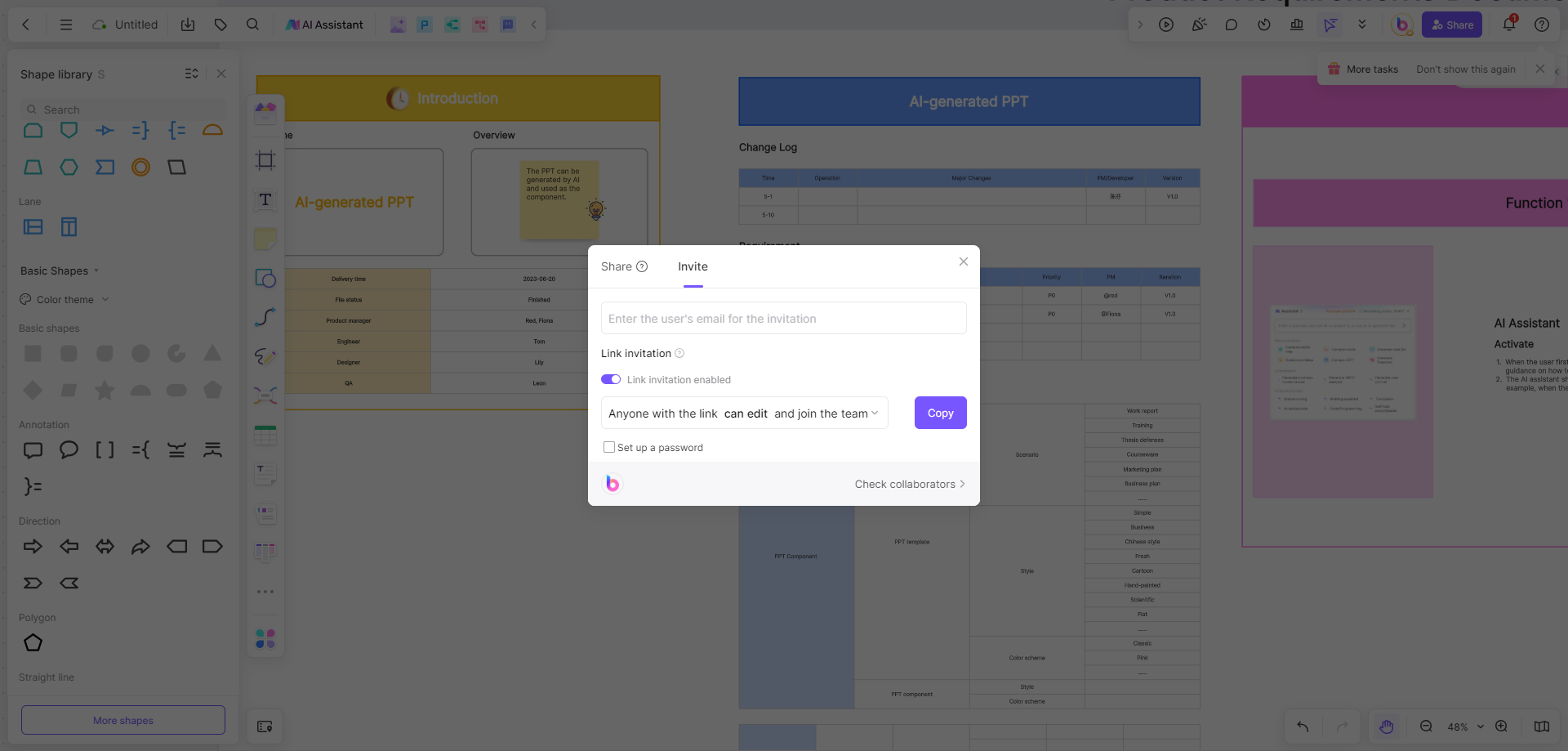
Step 4. Once you've finalized your product requirement document, you can easily share it with stakeholders or save it for future reference.
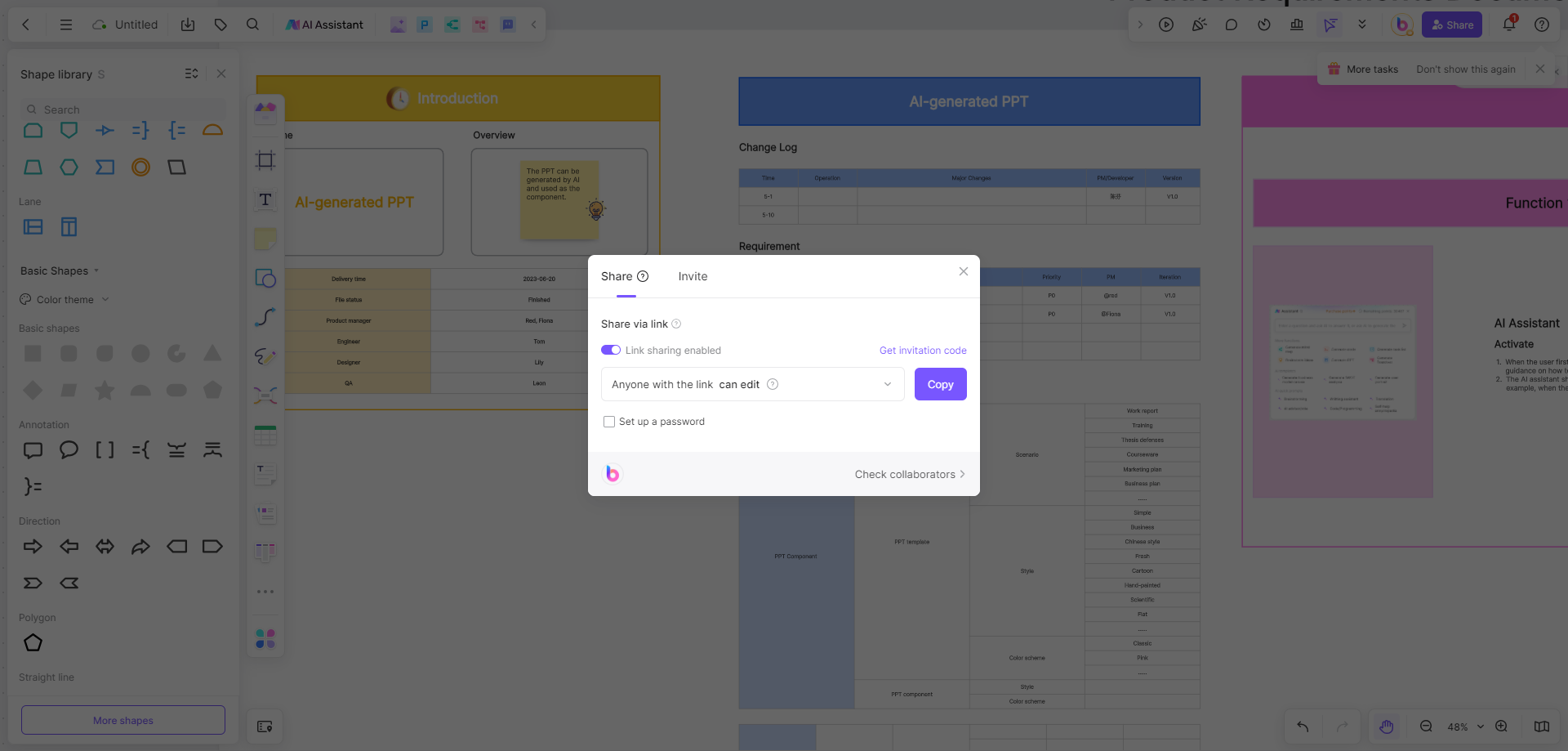
Part 6. Best Practices for Product Requirements Document
Collaboration:
- Involve key stakeholders from various departments.
- Encourage open communication to gather diverse perspectives.
Clarity and Simplicity:
- Use clear and concise language.
- Avoid technical jargon that may confuse non-technical stakeholders.
Version Control:
- Implement version control to track changes over time.
- Clearly document revisions and updates.
Traceability:
- Ensure that each requirement is traceable to the project goals.
- Establish a system for tracking changes and updates.
Prioritization:
- Clearly define and prioritize features.
- Distinguish between must-have and nice-to-have elements.
Review and Feedback:
- Conduct regular reviews with the development team.
- Gather feedback from stakeholders to refine the document.
Conclusion
A well-crafted Product Requirements Document is an invaluable tool for successful product development. By clearly outlining the objectives, features, and specifications, it provides a roadmap that guides the entire team toward a common goal. Regular updates, collaboration, and attention to detail are essential to ensure the PRD remains a living document that adapts to the evolving needs of the project. Following these best practices will contribute to the creation of a robust PRD, setting the stage for a successful and efficient product development process.
Boardmix intuitive online whiteboard, equipped with a vast array of templates and real-time collaboration features, is designed to streamline your workflow and enhance team productivity. Don't just take our word for it - try Boardmix today and revolutionize the way you create product requirements documents.








